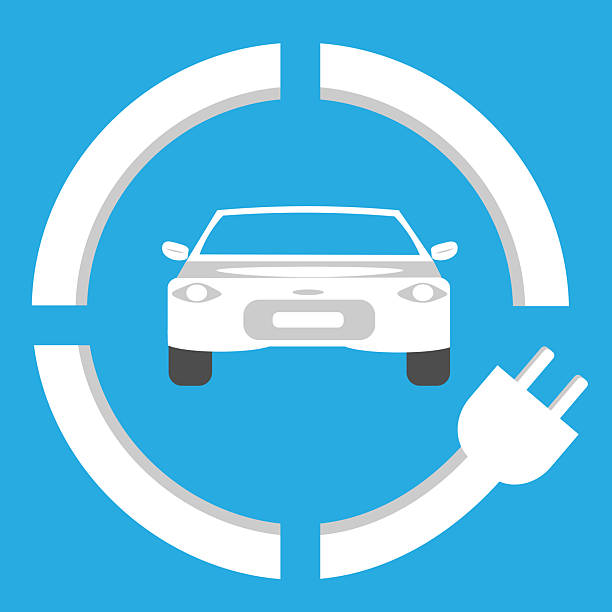The landscape of transportation is undergoing a profound transformation driven by the surge in electric vehicle (EV) adoption. The Electric Vehicle Market Growth has become a focal point for automakers, governments, and consumers alike, owing to a confluence of technological advancements, environmental concerns, and supportive policies.
At its core, this exponential growth is rooted in increasing awareness of climate change and the need to reduce carbon emissions. Globally, transportation contributes significantly to greenhouse gases, and EVs present a cleaner alternative to traditional internal combustion engine vehicles. Governments across nations are recognizing this importance and are enacting policies and incentives to accelerate EV adoption. For instance, numerous countries have announced deadlines to phase out gasoline-powered vehicles, spurring automakers to shift their strategies towards electrification.
Additionally, technological breakthroughs in battery technology have played a pivotal role. Improvements in energy density, reductions in costs, and longer lifespan of batteries have made EVs more affordable and practical for a broader consumer base. Enhanced charging infrastructure further alleviates range anxiety, making EVs a viable option for daily commuting and long-distance travel alike.
The increasing availability of diverse EV models—from compact city cars to luxury SUVs—caters to various consumer preferences and budgets. All these factors cumulatively fuel the Electric Vehicle Market Growth on a global scale, indicating a fundamental shift in how society perceives and adopts personal and commercial transportation modes.
How Do Government Policies Influence Electric Vehicle Market Growth?
Government initiatives and regulations are among the most influential factors driving the Electric Vehicle Market Growth. Various policies aim to incentivize consumers and manufacturers to accelerate the transition from traditional vehicles to electric.
Many countries have introduced tax rebates, subsidies, and reduced registration fees for EV buyers. For instance, in the United States, federal tax credits can significantly lower the purchase price of EVs, while several European nations offer substantial incentives and free access to high-occupancy lanes. These financial incentives lower the barriers to entry for consumers, making EVs more economically attractive.
In addition to financial incentives, stricter emission standards compel automakers to develop and sell more electric models. Regulations such as the European Union’s Euro standards or California’s Zero Emission Vehicle (ZEV) mandates require automakers to produce a certain percentage of zero-emission vehicles, directly impacting the pace of EV market expansion.
Furthermore, some governments are committing to zero-emission vehicle targets, announcing phases-out dates for internal combustion engines. For example, the United Kingdom aims to end the sale of new petrol and diesel cars by 2030, catalyzing automaker investments in EV technology.
These policies combined create a favorable environment that promotes Electric Vehicle Market Growth by reducing costs, increasing consumer confidence, and setting clear industry targets.
What Role Do Technological Innovations Play in Accelerating Market Expansion?
Technological advancements are critical in shaping the trajectory of Electric Vehicle Market Growth. Innovations primarily focus on battery technology, vehicle design, and charging infrastructure, each contributing to making EVs more efficient, affordable, and user-friendly.
Battery Technology: The heart of EVs lies in their batteries, and recent breakthroughs have significantly improved capacity, longevity, and safety features. The advent of solid-state batteries promises even higher energy density, faster charging, and greater safety, which could revolutionize the market further.
Charging Infrastructure: The expansion of fast-charging networks reduces range anxiety and allows for quick top-ups during travel. Companies are investing heavily in ultra-fast chargers, enabling EVs to regain substantial range within minutes. With charging stations becoming more widespread, EV adoption becomes increasingly convenient.
Vehicle Design and Efficiency: Advances in lightweight materials, aerodynamic designs, and efficient powertrains have enhanced the performance of electric vehicles. Manufacturers are also integrating smart features and connectivity options, appealing to modern consumers.
Such innovations continuously lower the total cost of ownership and improve the user experience, thus encouraging more consumers and commercial fleets to adopt electric vehicles, fueling sustained Electric Vehicle Market Growth.
Why Is Consumer Perception and Acceptance Critical for Market Expansion?
Consumer perception significantly influences the pace and extent of Electric Vehicle Market Growth. While technological and policy-related factors are vital, the adoption rate depends heavily on how people perceive electric vehicles.
Historically, consumers’ reservations about EVs included concerns over range anxiety, charging time, high costs, and vehicle reliability. Thankfully, these concerns are gradually diminishing due to continuous improvements in technology and infrastructure.
Awareness campaigns and real-world positive experiences have boosted consumer confidence. Moreover, societal shifts toward sustainability and eco-conscious lifestyles increasingly favor electric vehicles. Many consumers now see EVs not as a trendy and responsible choice rather than just an environmentally friendly one.
Moreover, automakers are actively engaging customers through innovative marketing strategies, providing test drive opportunities, and offering attractive financing options to ease the transition. As electric vehicles become more mainstream and their benefits more apparent, consumer acceptance accelerates, directly impacting the Electric Vehicle Market Growth.
Range Anxiety and Charging Convenience: While initial skepticism revolved around limited driving ranges, today’s EVs often offer ranges comparable to traditional cars. Paired with the expanding charging infrastructure, these vehicles are becoming more practical for everyday use, further encouraging consumer adoption.
Cost Perception: Although EVs initially had higher upfront costs, falling battery prices and government incentives have significantly narrowed the price gap, making EVs more financially accessible. Over time, lower operating costs—due to fewer moving parts and lower fuel and maintenance expenses—further appeal to consumers.
In essence, changing perceptions and increasing acceptance are central to broadening the EV market base. As more individuals realize the tangible benefits of electric vehicles, the Electric Vehicle Market Growth will continue to surge.
How Are Industry Players Responding to and Shaping Market Trends?
The automotive industry has undergone a seismic shift with numerous companies pivoting their strategies toward electrification. Major automakers are investing billions into electric vehicle development, establishing dedicated EV divisions, and setting ambitious goals for sustainable fleets.
Product Portfolio Expansion: Traditional automakers like Ford, General Motors, Volkswagen, and Toyota are introducing a wide array of electric models to appeal to diverse tastes and budgets. Meanwhile, new entrants such as Tesla have spearheaded innovation, demonstrating the commercial viability of electric cars and creating a competitive landscape.
Strategic Alliances and Investments: Industry players are forming alliances to develop charging infrastructure, share technology, and streamline supply chains. For instance, collaborations between automakers and charging network providers facilitate the deployment of fast chargers in strategic locations.
Innovation and R&D: Significant investments in battery research, lightweight materials, and vehicle software are continuously pushing the boundaries of EV capabilities. Companies are also exploring alternative powertrains, such as hydrogen fuel cells, to complement battery electric vehicles.
Sustainability Commitments: Many firms have committed to carbon neutrality and sustainable manufacturing processes, aligning themselves with global environmental goals. Such commitments enhance brand reputation and customer loyalty, further propelling the Electric Vehicle Market Growth.
Market Competition and Consumer Choice: The fierce competition among automakers leads to better products, lower prices, and more options, which collectively fuel market expansion.
Through proactive strategies and innovative approaches, industry players are not only responding to the market trends but actively shaping the future of transportation, ensuring the sustained growth of the electric vehicle sector.
What Are the Challenges Facing Electric Vehicle Market Growth?
Despite the promising outlook, several hurdles remain that could temper the pace of Electric Vehicle Market Growth. Understanding these challenges helps stakeholders address them effectively.
Infrastructure Development
Building a comprehensive charging network is critical but requires significant investment and planning. In many regions, especially rural or developing areas, charging stations are sparse, deterring potential buyers.
Battery Supply Chain and Material Shortages
The reliance on critical materials like lithium, cobalt, and nickel poses supply chain risks. Fluctuations in raw material availability and geopolitical considerations can impact battery manufacturing and, consequently, EV production.
Cost Barriers
While prices are falling, the initial purchase cost of EVs remains higher than traditional vehicles, which can be a barrier for price-sensitive consumers.
Range Limitations
Although much improved, some consumers remain concerned about the driving range, especially in colder climates or for long-distance travel, where battery efficiency can decline.
Technological Uncertainties and Compatibility
Rapid technological advances pose a challenge for standardization and interoperability. Consumers and charging infrastructure providers seek cohesive systems to ensure seamless use.
Policy and Regulatory Variability
Inconsistent policies across regions can hinder uniform growth. The absence of clear or supportive policies in certain markets may slow EV adoption.
Consumer Awareness and Misconceptions
Despite increased knowledge, misconceptions about EV performance, battery life, and safety still persist among some consumer segments.
Addressing these barriers requires collaborative efforts by governments, industry stakeholders, and consumers. Investment in infrastructure, technological innovation, policy consistency, and public education are vital to overcoming these challenges and ensuring sustained Electric Vehicle Market Growth.
How Will Changes in Energy and Environmental Policies Impact Future Market Dynamics?
The global shift toward sustainable energy use and stricter environmental policies will profoundly influence the future of Electric Vehicle Market Growth.
Decarbonization Goals: As countries work toward reducing carbon footprints, they are implementing policies aimed at phasing out fossil fuels. This trend directly supports the adoption of electric vehicles by enforcing bans on the sale of new internal combustion engine vehicles in certain regions.
Promotion of Renewable Energy: The growth of renewable energy sources such as solar and wind complements EV adoption. As the energy grid becomes greener, charging electric vehicles increasingly results in a lower carbon footprint, reinforcing their environmental advantage.
Global Agreements and Climate Commitments: Initiatives like the Paris Agreement motivate countries to strengthen their environmental commitments, often translating into national policies that favor electric mobility. These include investments in clean energy, stricter emission standards, and incentives for EV adoption.
Impact on Market Dynamics:
- Accelerated Adoption: Stringent environmental policies incentivize consumers and corporations to choose electric vehicles, boosting the overall Electric Vehicle Market Growth.
- Manufacturing Shifts: Automakers will reorient their production lines to prioritize electric models, reducing investments in traditional combustion engine technologies.
- Grid Integration and Demand: As EV adoption increases, electricity demand will rise, prompting investments in grid infrastructure and renewable energy capacity to sustainably support charging needs.
- Innovation and Investment: Governments and industries will invest more in research, development, and infrastructure projects aligned with environmental targets, fostering innovation and competitive advantages.
In summary, evolving energy and environmental policies are expected to act as catalysts for the future growth of electric vehicles. They create a reinforcing cycle—policy-driven demand encourages industry investments, which in turn stimulate further market expansion and technological progress.
What Are the Future Outlooks for the Electric Vehicle Market Growth?
Looking ahead, the trajectory of the Electric Vehicle Market Growth appears promising, with projections indicating a substantial increase in adoption over the coming decades.
Market Forecasts: Analysts predict that electric vehicles could comprise over 50% of new car sales globally by the early 2030s. This growth is driven by declining costs, technological advancements, and supportive policies.
Emerging Markets: While North America, Europe, and China are currently leading, emerging markets in Southeast Asia, Africa, and Latin America are increasingly recognizing the benefits of EVs, driven by urbanization and a desire for sustainable development.
Commercial Electric Vehicles: The commercial sector—including delivery vans, buses, and trucks—is expected to see rapid electrification, contributing significantly to market expansion. Fleet operators see EVs as cost-effective and sustainable solutions.
Advancements in Technology: Breakthroughs in battery tech, such as solid-state batteries, could drastically increase range and charging speed, making EVs more convenience-oriented.
Market Challenges and Opportunities: While obstacles remain, ongoing investments, policy support, and technological innovations present ample opportunities for market players to seize a growing share of the global transportation landscape.
In conclusion, the future outlook underscores a wave of transformation—an electrified mobility ecosystem that is integral to global efforts toward sustainability and cleaner transportation.



